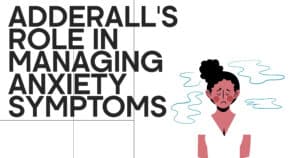Although crying is regarded as the expression of sadness, hurt, frustration, or relief, its main function has to do with an individual’s sensitivity and ability to regulate their emotions. But some people have difficulty crying even when the wish appears most substantial. If you are searching for an explanation for ‘Why can’t I cry,” I must tell you that you are not the only one.
It is nearly impossible to imagine not shedding a tear throughout an emotional event or from feeling sad. In a society where almost everyone feels emotionally numb, not crying is more common than you would think. Crying suppression may result from psychological problems, old traumas, ongoing pressure, or specific illnesses.
Other people may find themselves sobbing uncontrollably without realizing why, leading them to ask, “Why do I keep crying so much?” Analyzing the emotional as well as the physiological reasoning allows people to reconnect with their feelings and reclaim emotional balance.
Why Can’t I Cry? Exploring the Emotional and Physical Causes
Crying or shedding tears is not only an emotional reaction but a sad change to our minds, nervous systems, and biochemistry. Our brain seems pivotal to the process, triggering a complex sequence if we ever try to “hold back” our tears. It is almost as if an emotional cage prevents the person from expressing themselves. Barring one from crying is suggestive of some disturbing psychological block that has to be removed, and this can be remedied.
Learned Emotional Suppression and Burnout
Social conditioning may lead some people to consider crying as a show of weakness. More severely, an individual may be undergoing emotional burnout. Emotional burnout occurs when the individual’s nervous system becomes so overwhelmed that it completely shuts down its ability to respond emotionally.
The situation is worse when there is stress and anxiety, as these conditions initiate a state of perpetual physiological readiness that makes it extraordinarily difficult to tap into profound emotions.
Depression, Physical Health, and Crying
Another overlap is depression. Some individuals suffering from depression may cry frequently, while others experience emotional detachment and disconnect from their sadness. Sometimes, an individual’s physical health concerns, like dehydration or some medications, can impact the ability to produce tears, which makes crying difficult.
Is It Normal to Feel Like Crying but Not Shed Tears?
One often feels the need to cry but, for whatever reason, but cannot produce tears, which can be somewhat troubling.
Emotional Exhaustion and Crying Suppression
One factor contributing to this is emotional exhaustion. When you experience long-term stress, grief, or trauma, your brain can suppress crying as a form of protection. It’s as if your emotional system is at a tipping point, and turning off is the sole response it can provide.
Hormonal Imbalances and Tear Production
Imbalances can also influence crying in hormones. Fluctuations in hormone levels from birth control use, pregnancy, menopause, or even persistent stress can alter the body’s ability to form tears.
Some individuals hide their emotions without knowing because they are scared to appear weak or vulnerable. This complex psychological defense can render one incapable of crying even when feeling sad.
Emotional Shutdown: When You Can’t Cry Anymore
Emotional shutdown can occur during highly emotional events and serve as a coping mechanism. Perhaps you feel invulnerable, and instead of crying or displaying emotions, it is replaced with a complete emotional void.
Most trauma survivors or people under chronic stress tend to do this quite often. The body-defending mechanism functions over time to protect the body, and numbness takes place, causing blockages in feelings of sadness, joy, or social interaction. These disconnects can create an emotional void, leading to deep isolation and an unhealthy connection with emotions.
Is Crying When Angry a Trauma Response?
Some people can cry when angry, while others go blank. Have you ever questioned if crying when angry is a trauma response? The answer is rooted in your personal history.
For some individuals, anger is not the primary emotion but rather the result of an event. If you were a kid who was not allowed to express anger or had triggers that meant expressing anger would be deemed a punishable offense, you likely formed a mental construct merging sadness and anger, resulting in tears instead of explosive outbursts.
Alternatively, one can go mute and suppress their cry and silence, leading to numbness. Knowing your past will teach you how to react better to your emotions.
Psychological and Physiological Reasons for Being Unable to Cry
Your capacity to shed tears is connected with your life’s psychological and physical aspects. Emotional disorders like anxiety and depression tend to either increase or decrease the tendency to cry, depending on the situation, by modifying the control system of emotions.
The Role of Trauma and Stress in Crying Suppression
The brain develops defense mechanisms in response to repeatedly distressing situations and past trauma. Such suppression makes crying very difficult because one would have to relive the painful emotions that are avoided.
Chronic stress and burnout can also trigger an inability to cry. Emotional expression is deeply restricted when the body is in constant survival mode.
The Impact of Medications on Emotional Responses
Antidepressants and mood-stabilizing drugs can lessen emotional reactions. If your medication seems to be affecting your ability to cry more than usual, this is something that should be addressed with your doctor.
The Connection Between Mental Health and Crying
Crying is essential because it serves as a potent emotional release and a way to strengthen an emotional bond with others. Having not cried for a long period could mean that you may have underlying issues related to mental or emotional health that require focus.
Many people link crying only with sadness, but crying has several functions. It could be a mark of frustration, covering an overwhelming feeling of relief or even joy. If a person loses all ability to cry, it can indicate that they have detached from their emotions, purposely or unknowingly. Whatever the case, this emotional disconnection can be worked through therapy, self-reflection, or changes in one’s lifestyle to restore balance.
How to Fix an Inability to Cry
If you’ve been struggling with why you can’t cry anymore, there are steps you can take to reconnect with your emotions.
- Journaling. Writing about feelings can help the individual process repressed emotions, allowing the person to cry if and when needed.
- Watching Emotional Movies or Listening to Music. Sometimes, disassociated feelings can get activated through external stimuli such as movies or songs.
- Practicing Mindfulness. Deep breathing exercises coupled with meditation make people more aware of their feelings and motivate the release of emotions.
- Talking to a Trusted Friend or Therapist. Disclosed issues can be talked about in a safe environment, which aids the individual in working through feelings effectively.
When to Seek Professional Help for Emotional Numbness
Considering professional help might be the best option if the inability to cry is for an extended period and is coupled with a sense of detachment, numbness, or even depression. Such a therapist will walk you through the underlying causes of emotional suppression while guiding you on how to reconnect with your feelings.
Indicators of why you might need professional assistance are the following:
- Persistent numbness with no indicators of advancement.
- Constantly feeling like you are in an emotionally frozen state.
- An inability to relate to others on an emotional scale.
- Emotionally unprocessed trauma or stress.
Therapy teaches and assists patients in constructive emotional exploration and expression.
Take the First Step Toward Emotional Healing at CA Mental Health
If emotional numbness becomes an ongoing problem, consider seeing a professional. Here at CA Mental Health, we will help you navigate the difficulties and reconnect with your feelings.
At CA Mental Health, we are here to offer you the support you need through our trained mental health specialists. We provide tailored treatment strategies, trauma-focused rehabilitation, and diverse mental health services designed to help you reclaim your emotions, which, in turn, enables you to shed tears when the occasion demands it. Remember, you do not have to walk this road alone, and support is available whenever you accept it.
FAQ
What does it mean when you can’t cry anymore?
Usually, when you can’t cry anymore, it is a result of stress, trauma, or other mental health issues that cause your feelings to be bottled up.
How to fix an inability to cry?
Self-reflection, mindfulness, counseling, and allowing time to experience and process emotions will help manage an inability to cry.
Is it unhealthy to not cry for years?
That is undoubtedly the case; shedding tears due to sadness is a significant indicator of grief. Suppressing feelings for a prolonged period may increase stress, create anxiety, and make dealing with emotions more difficult.
Why can’t I cry if I want to?
The reason you may not be able to cry if you want to is that your body has developed mechanisms to avoid crying, or some combination of medicine may have altered your emotions. Meet with a professional to better understand what may be causing this.












